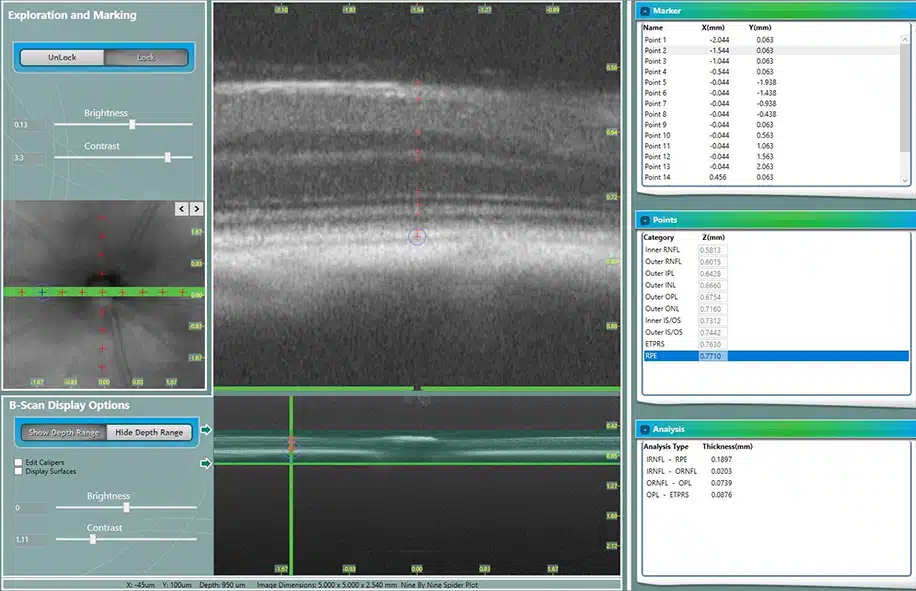
We provide the ability to track disease progression after induction of disease by utilizing optical coherence tomography (OCT), measuring full retinal thickness, the retinal ganglion cell (RGC) layer and nerve fiber layer (RNFL) in real time.
In conjunction with OCT we use electroretinography (ERG) to test retinal functionality. Upon the conclusion of the study, we use histopathology to assess the condition of the retinal ganglion cells and potential protection from your product to RGC and RNFL.
Primary Endpoints in the Optic Nerve Crush Model
Optical Coherence Tomography (OCT)
High quality retinal scanning using the Lecia® SD-OCT allows for accurate retinal thickness measurements of distinct retinal layers.
Electroretinography (ERG)
Our lab uses a proprietary ERG system in collaboration with Cornell University to produce the most accurate ERGs.
Microinfusion Injection Delivery
Confirmation fundus images of each injection procedure that ensures proper delivery of treatment.
Retinal Ganglion Cell Count
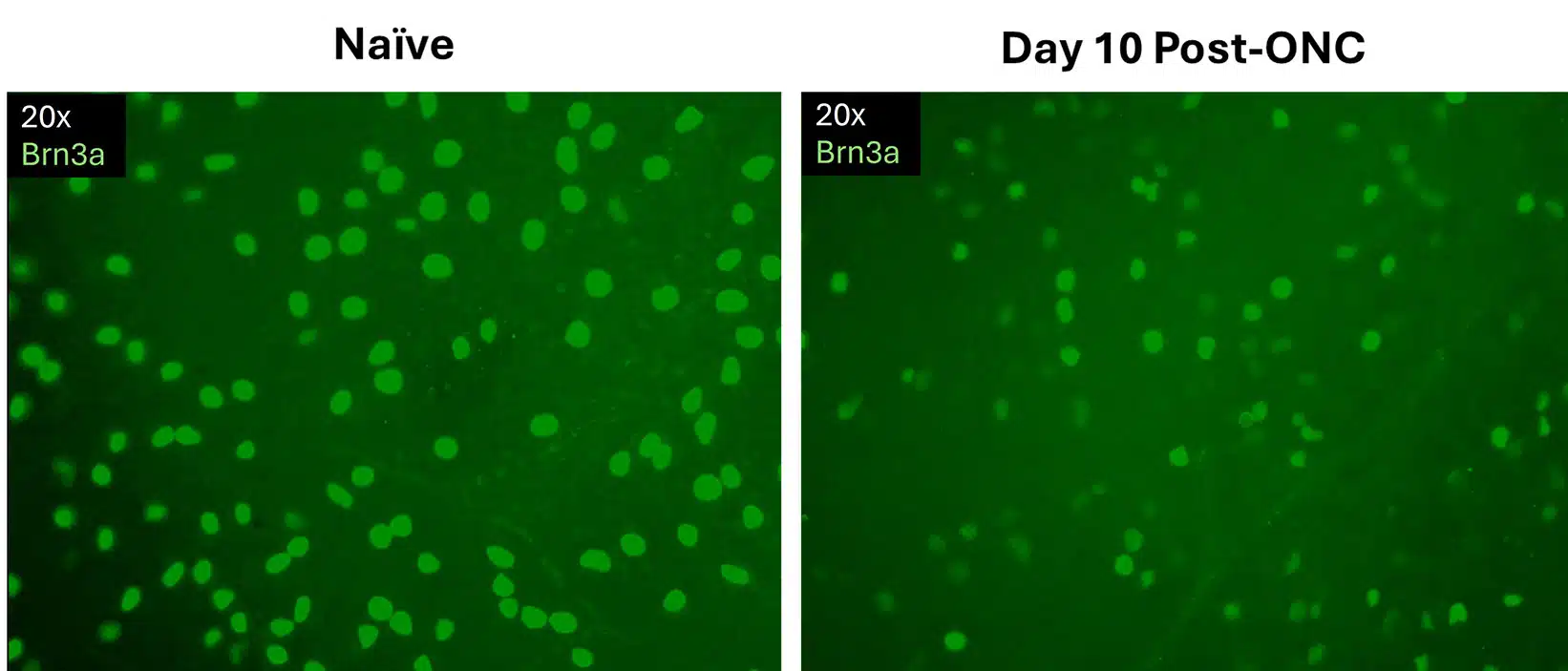
A reduction in total retinal ganglion cell count is a hallmark endpoint in the rodent optic nerve crush model. Cellular loss can be observed qualitatively with representative images as shown or quantitatively used automated image analysis.
Retinal Nerve Fiber Layer Thickness

Thinning of the RNFL and inner plexiform layer (IPL) can be measured by OCT in the optic nerve crush model. This read-out enables monitoring over time with repeat measurements while providing robust qualitative and quantitative structural data.
About this model
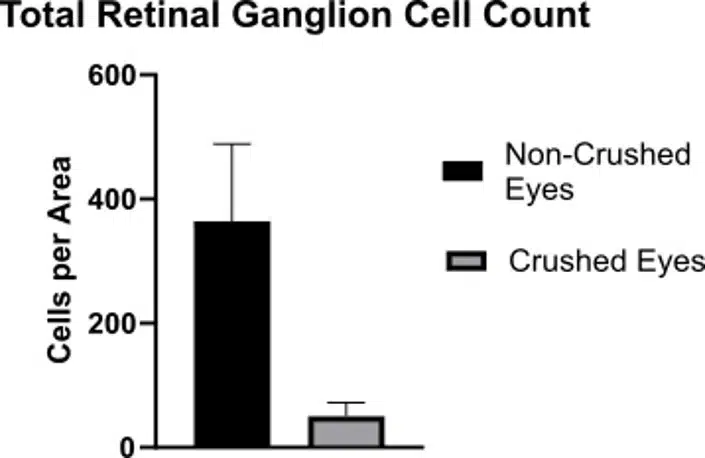
Retinal Ganglion Cell Quantification
Quantification of total retinal ganglion cells per area matches what is observed qualitatively in the fluorescence microscopy images shown above. Additional cellular staining options are available.
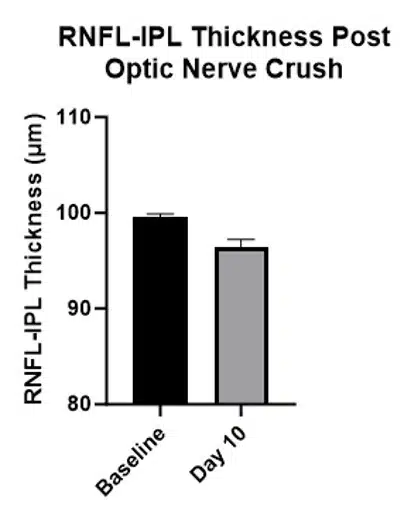
RNFL-IPL Thinning in the Optic Nerve Crush Model
Thinning of the RNFL-IPL in the optic nerve crush model can be observed using OCT and quantified. This enables repeat measurements to obtain a time course of disease onset and progression.
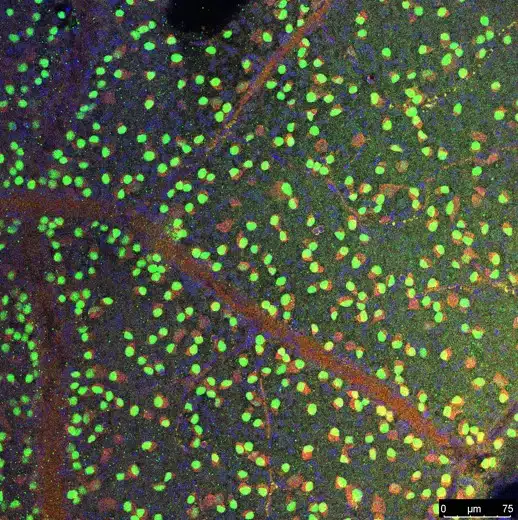
Customized Imaging and Assessments
Retinal flat mounts and histological sections can be processed with a wide variety of stains and antibodies for molecular markets of interest. Inquire about customized assessment needs for your project.
Frequently Asked Questions
The optic nerve crush model mimics severe damage to the optic nerve similar to that of traumatic optic neuropathy and optic nerve degeneration in glaucoma. Optic nerve crush leads to axonal degeneration and initiates apoptosis in retinal ganglion cells which over time causes vision loss. The purpose of this model is to test new and novel treatments that may help us to understand the mechanisms behind neuronal death and to treat types of optic neuropathy.
This is similar to ONC in rats although this is a more difficult approach with a higher likelihood of adverse effects or events from the procedure. However, the benefit of conducting this model in mice is that it allows for whole retina imaging for retinal flat mounts. Using mice for this model is more appealing in academic settings because it tends to be slightly cheaper and mice are easier to house.
The most relevant clinical sign of optic nerve damage is optic nerve cupping or enlargement of the cup-to-disc ratio. This is caused by a sustained increase in intraocular pressure causing a condition where the depression of the optic nerve in the posterior aspect of the eye to increase in size. If left unchecked apoptosis will initiate in the retinal ganglion cells and vision loss will progressively get worse. Both cup-to-disc ratio and thinning of the retina nerve fiber layer (RNFL) can be measured by OCT. Increases in cup-to-disc ratio and thinning of the RNFL are indications of glaucoma.
Optic neuritis is most commonly associated with autoimmune disorders with most cases being associated with multiple sclerosis (MS) but can also be caused by an infection.